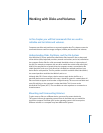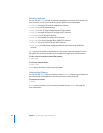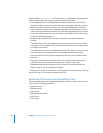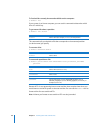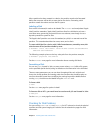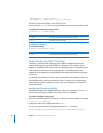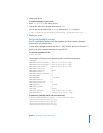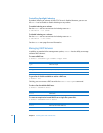
Chapter 7 Working with Disks and Volumes 91
Managing Disk Journaling
A robust file system journaling feature is available to enhance the availability and fault
tolerance of servers and server-attached storage devices. Journaling protects the
integrity of the Mac OS Extended (HFS+) file system in the event of an unplanned
shutdown or power failure, and maximizes uptime by expediting repairs to the affected
volumes when the computer restarts.
Checking to See If Journaling is Enabled
You can use the mount tool to see if journaling is enabled on a volume.
To see if journaling is enabled:
$ mount
Look for journaled in the attributes in parentheses following a volume. For example:
/dev/disk0s9 on / (local, journaled)
Enabling Journaling for an Existing Volume
You can use the diskutil tool to enable journaling on a volume without affecting
existing files on the volume.
Important: Always check the volume for disk errors using the fsck_hfs tool before you
enable journaling.
To enable journaling:
$ diskutil enableJournal
volume
The following example shows journaling being enabled on the exisiting volume /dev/
disk0s10.
$ mount
/dev/disk0s9 on / (local, journaled)
/dev/disk0s10 on /Volumes/OS 9.2.2 (local)
$ sudo fsck_hfs /dev/disk0s10/
** /dev/rdisk0s10
** Checking HFS plus volume.
** Checking extents overflow file.
** Checking Catalog file.
** Checking Catalog hierarchy.
** Checking volume bitmap.
** Checking volume information.
** The volume OS 9.2.2 appears to be OK.
$ diskutil enableJournal /dev/disk0s10
Allocated 8192K for journal file.
Journaling has been enabled on /dev/disk0s10
$ mount
Parameter Description
volume
The volume name or device name of the volume.



